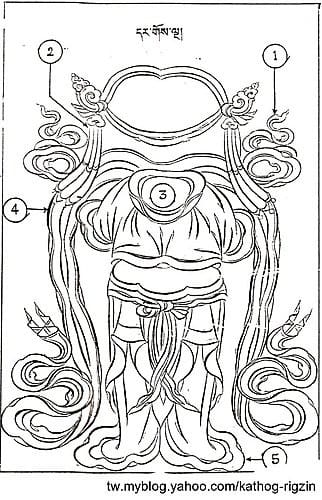
The clothes of the Buddha and Bodhisattva are solemn
Tibetan Buddhism’s prudence and rigor on the inheritance of the Dharma are evident from the translation of the Tibetan scriptures, the academy system, and the practice of rituals.
“The Thirteen Solemnities of the Buddha”
It is divided into five satin robes and eight treasures

[1] Silk satin five vestments
1. A streamer hanging behind a blue satin crown
2. The crown hanging under the crown of the Buddha of the five directions
3. White satin shoulder drapery with gold patterns
(If you want to fully follow the rules for painting thangkas, you should draw an ornament called yin and yang mantle (armpit) from the armpit of the left shoulder to the armpit of the right shoulder.)
4. From the cuffs of the jacket to the palms, the green satin draped down
5. Inner skirts that cover the lower body, as well as various other lower skirts
(According to the common Buddha painting method, the skirt is painted all red, or the hem edge part is painted red, and the rest of the skirt part is painted in another four colors)

[2] Eight ornaments of treasures
1. Treasure tiara
2. Earrings
3. Necklace
4. Armbands
5. Jewel epaulettes
6. Jumbo epaulettes
7. Bracelets
8. Anklebs
The above are collectively known as the thirteen solemn Buddhas.
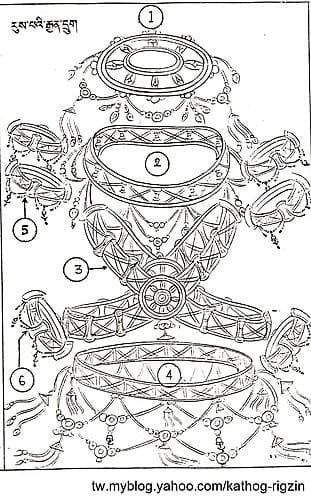
The Six Solemn Bone Ornaments of the Tantric Buddha-figure
1. 32 checkered bones from the top of the head to the bun
2. 16 checkered bone mantle necklace around the neck
3. 122 checkered bone mantles from the back to the chest
4. The belt of 64 checkered bones on the inner skirt is reined
5. Bone ornaments on the wrist and arms
6. The bone ornaments on the feet (or the bone ornaments of the hands and feet are counted as one, and the ear ornaments are the sixth solemnity, which is the meaning of the six paramitas)
There are other names and algorithms, such as:
1. The bone decoration of the left and right shoulders is manibao
2. Bony lotus on the chest
3, the bone ornament of the back of the King Kong
4. The bone chakra of the scapula…
The above is the basic bone ornament solemnity.
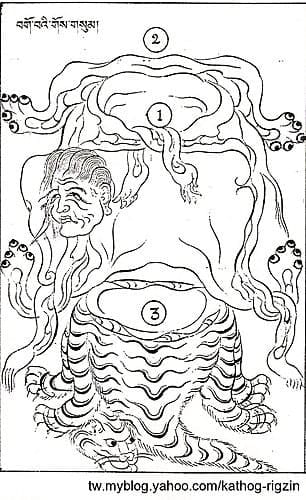
The Eight Solemn Corpses:
It is divided into three drapes of anger, two solemn accessories, and three nectars.
[1] The Three Cloaks of Wrath
Occasionally, ignorant beings criticize that the tantric deity has a bloody physiognomy and is not a great compassion, but they don’t know that this is a manifestation of the Dharma and merits! The meaning of wearing a bloody skin represents the subduing of the three poisonous afflictions, fearlessness and freedom of luck…
1. Human skin. Destroying greed with bodhichitta
2. Elephant skin. Eliminate foolishness with ten powers
3. Tiger skin. Subdue hatred with swift and courageous force
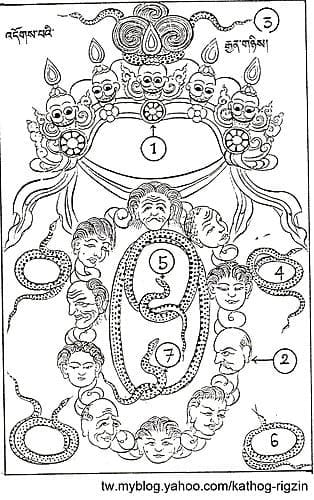
[2] Accessories two majestic
That is, the skull ornament and the snake ornament, which are subdivided into seven types
1. A crown of five withered skulls
2. A long epaulettes of withered or damp and warm, bleeding and mixed with fifty skulls
(The mixture of dry and moist skulls can also be used, which does not affect its significance)
3, the white snake headband of the dragon king caste
4, Yellow snake earrings of the Vedighant caste
5, Red snake necklace of the Brahmin caste
6, The green snake anklet of the Shudra caste
7, Black snake epaulettes of the Chandra caste
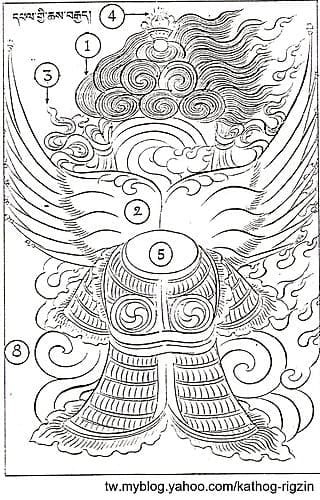
[3] Applying three nectar… It is not the theme of this time, so it is omitted.
“The Eight Clothes of the Warrior Protector”
According to the Tantra:
1. Erect a bun to cover the reincarnation clothes
2. King Kong Peng wings are convenient for wisdom clothing
3, the indigo crown is often broken
4. Top Vajra caste honorable main clothes
5, rhino skin armor glorious clothes
6, the wisdom of the Buddha’s mother clothes (according to the respective Buddha mother’s dependents)
7, cover the demon warrior weapon clothing (according to the respective banners)
8. Burn the troubled Vajra blazing cloak
Or as stated in the Yongdzha Kasu:
The majesty shines as a drigal carp suit
Convenient wisdom and fit the sun and moon clothes
Burn the Wisdom Blazing Cloak of Hatred
Yunyun….(omitted)